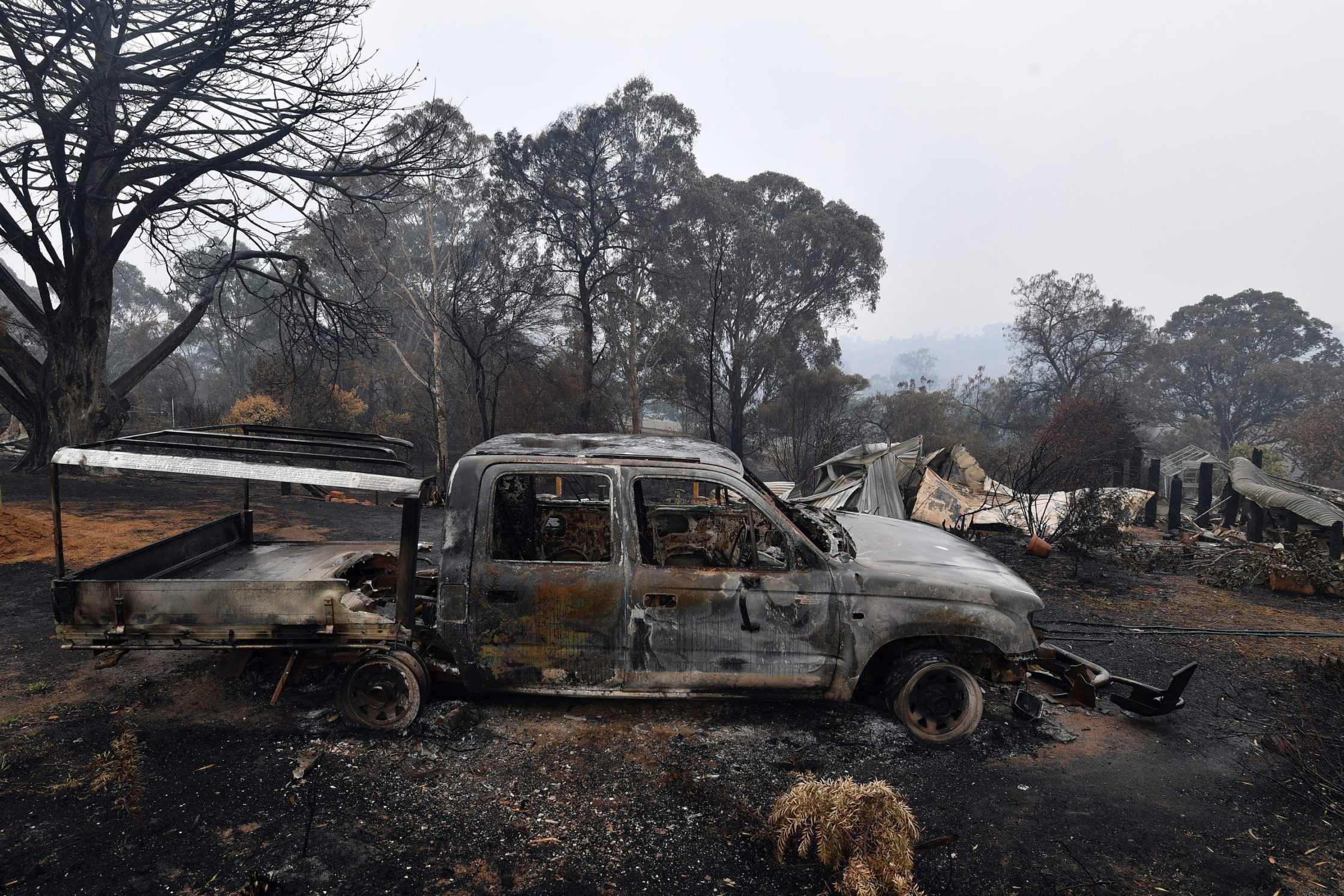The disaster unfolding in Australia is as horrific as it is unfathomable.
Hundreds of massive wildfires are burning throughout the country — scorching more than 15 million acres so far — with 24 people dead, more missing, thousands fleeing, and at least 1,400 homes destroyed.
“The loss of wildlife makes this world a lonelier, colder place and deprives future generations of a genuinely wild planet. Of course, these vanishing animal and plant species — including those lost to the climate crisis — portend our future as well.”
And the wildlife death toll is staggering. Ecologists at the University of Sydney estimate that in New South Wales alone, more than 480 million animals have been affected since the fires started in September, with many likely killed directly and others dying later because of depleted food and shelter resources. That figure only includes mammals, birds, and reptiles. It excludes insects, bats, and amphibians, so the potential loss of wildlife is likely much more significant — and says nothing of the fires burning in neighboring states like Victoria, Queensland, and South Australia.
What’s happening Down Under is a dark preview of the kind of chaos and destruction that’s awaiting the rest of the world in this rapidly unfolding climate crisis. No, it won’t be fired everywhere. In some cases, it will be oceans inundating coastal cities or widespread crop failures or deadly heat waves or disease outbreaks — or some fiendish combination of the above.
The overall effects will be the same, though: a calamitous march of death and damage that will tear apart human and wildlife communities around the globe. It sounds dramatic because it is.
But the future isn’t entirely written yet. Swift, decisive action to end the fossil fuel era and create a just, clean energy economy can still turn the tide.
Last month the Center for Biological Diversity, where I work, and more than 500 other groups called on the next U.S. president to declare a national climate emergency and take 10 crucial steps in the first 10 days in office to confront the climate crisis.
These include an immediate halt to new fossil fuel leases, infrastructure and exports; significant investment in a public renewable-energy generation; use of the Clean Air Act to slash greenhouse pollution; and prosecution of fossil fuel polluters who have lied and blocked progress for decades.
Get our best delivered to your inbox.
<!–
BG Options
/sites/all/modules/custom/ctas/images/june2019/cta-content-mobile-june-2019.jpg (newspaper)
/sites/all/modules/custom/ctas/images/june2019/cta-content-mobile-june-2019_3.jpg (cell)
/sites/all/modules/custom/ctas/images/june2019/cta-content-mobile-june-2019_4.jpg (radio)
/sites/all/modules/custom/ctas/images/august2019/mobile-1.jpg
–>
The next president must also rejoin the Paris Agreement and significantly increase U.S. commitments under the accord to the level needed. He or she can do all of this under existing law, without new legislation from Congress — so there’s no excuse for any further foot-dragging from the next administration.
The cost of climate inaction, or weak action, is evident and painful, and what’s happening in Australia is just the latest example. For wildlife, it’s made doubly tragic by what’s already happening around the globe.
In 2019 the United Nations said more than 1 million species face extinction in the coming decades. The current extinction crisis is like nothing human beings have ever experienced before, at a scale and pace unseen in millions of years.
Pollution, habitat destruction, and exploitation are key drivers, of course, along with the kind of horrific events that spin out of this climate emergency.
Australia’s a prime example. The nation has more than 300 native mammal species, including 244 that live nowhere else on Earth. Those include marsupial populations like the koala, which in the latest fires has experienced an estimated death toll of more than 25,000 in South Australia and 8,000 in New South Wales, representing 50 percent and 30 percent territorial losses, respectively.
Another species of particular concern in the eastern bristlebird, an Australian endangered species that are currently being threatened by wildfires straddling the New South Wales-Victoria border. Its future remains uncertain. Meanwhile, the endangered Kangaroo Island dunnart, a mouse-like marsupial found only on South Australia’s Kangaroo Island, is feared to have been completely wiped out by the wildfires.
The loss of wildlife makes this world a lonelier, colder place and deprives future generations of a genuinely wild planet. Of course, these vanishing animal and plant species — including those lost to the climate crisis — portend our future as well. That alarm bell is now ringing loud and clear. The only question left is whether we’ll answer it.
PrintCommon Dreams | Radio Free (2020-01-07T20:41:15+00:00) In Australia's Nightmare, a Vision of the Planet's Terrifying Future. Retrieved from https://www.radiofree.org/2020/01/07/in-australias-nightmare-a-vision-of-the-planets-terrifying-future/
Please log in to upload a file.
There are no updates yet.
Click the Upload button above to add an update.
